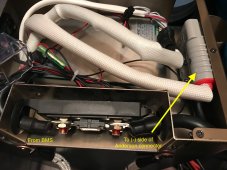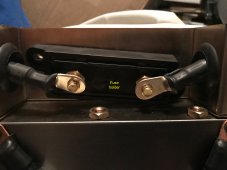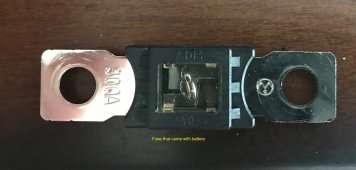Disconnect - Don't know how these will be mounted, like in a cabinet. You just want to make sure you can get to the master switch in a hurry if need be.
Panel to SCC breakers - I bought this box
breaker box and these
breakers. The box is rated for outside, but is used a lot inside. In my case, the box keeps me from accidentally bumping the breakers. Also, that box is made for four breakers. I intend to have a second set of panels with their own SCC so I will have four wires coming through my breakers. You don't need the box or that style of breaker, but some method of doing a panel disconnect is suggested, and some say is code, although I don't know if your RV will ever get a electrical inspection

My setup is going into a travel trailer with existing shore power which currently goes to the trailer's AC panel and a AC/DC battery charger. I will be disconnecting their shore power wiring and will run new wiring that will go first to the inverter, and from the inverter back to the AC panel.
When I looked at the cost of an ATS, battery charger, and inverter, I thought buying the Victron with them all integrated made a lot of sense plus the name recognition of Victron.
What I like about the Victron, is it magically manages all the power stuff, i.e. it can mix shore power and inverter power so you can actually craw both. I like having the ATS function so I don't need to worry about connecting and disconnecting stuff when connected to shore power.
BTW, I am on version "I" of my drawing and I am still making changes







